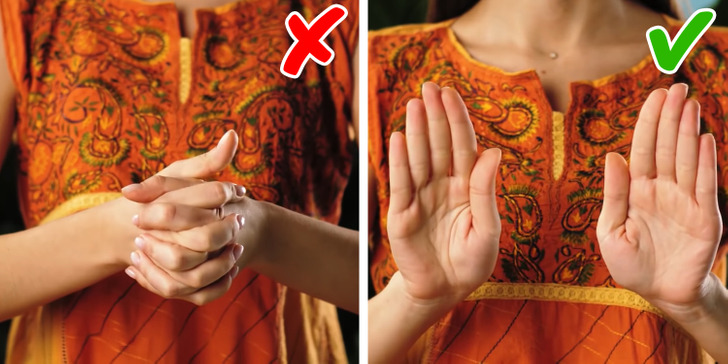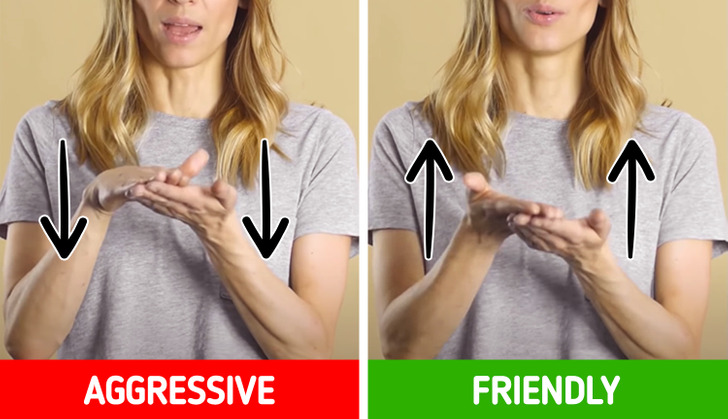What to Do With Your Hands When Standing in Public
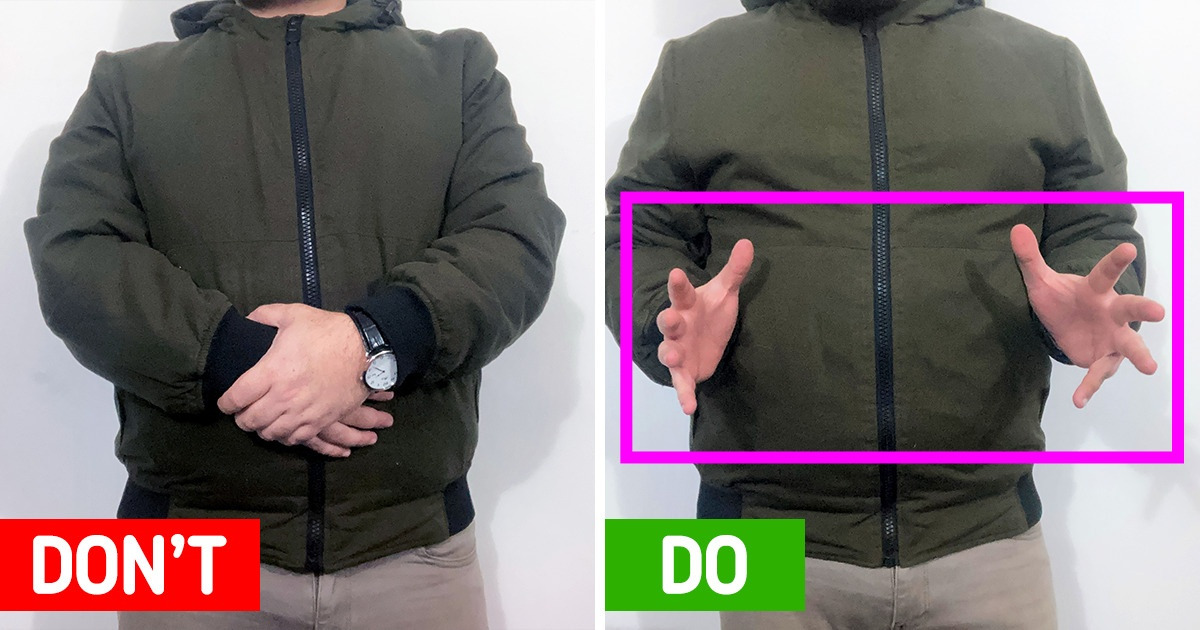
Using your hands while you’re standing is a very important thing. It’s something we’re hardwired to do when we’re expressing ourselves, and using them properly will help you be understood more easily, as well as be more engaging.
5-Minute Crafts has prepared this article with useful advice about communicating with your hands so you know what to do, what not to do, and how to do it.
1. Keep your hands at your sides
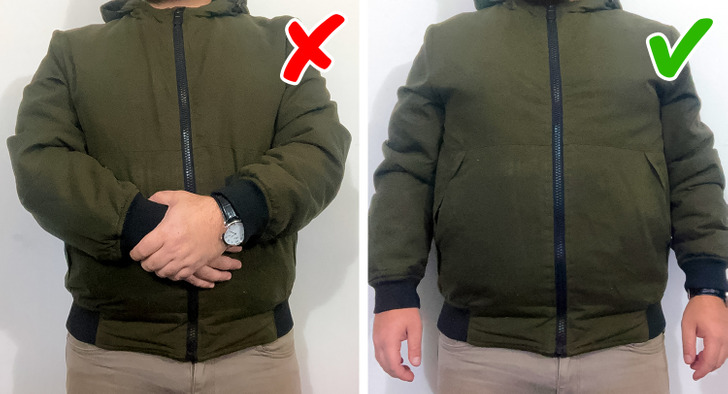
As a general rule, it is recommended that you rest your hands at your sides, as it is a good neutral position. This might feel awkward at first if you are not used to having them at your sides, but this position will look okay to other people. In fact, you will be projecting yourself as a more confident and open person.
If you feel like this position is too forced, try practicing in front of a mirror until it starts feeling more natural.
2. Avoid clenching your fists
While you may consider this a good option when you don’t know what to do with your hands, closing or locking your fists will actually make you come across as an aggressive person.
The same can be said for other gestures that hide your hands or fingers away. They put you in a more defensive position and it makes it harder for other people to understand your message. Other gestures that involve a partially closed fist, like pointing, are also not recommended for the same reasons.
3. Use open palm gestures
Using palm up gestures is highly beneficial for information retention on the part of the listeners. By gesturing up with your open palms, you are revealing that you have nothing to hide, and you will seem more friendly. Gesturing with your palms down generates the opposite effect, putting you in a more dominant and aggressive position.
4. Try not to fidget
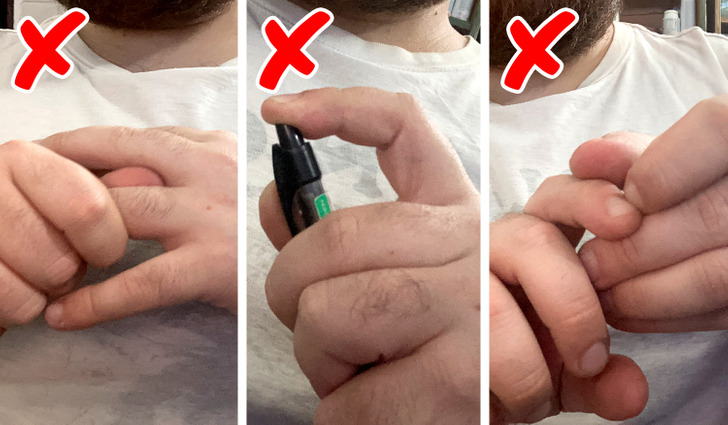
When you’re talking, it is advised that you avoid fidgeting because it not only it makes you come off as nervous, but it’s also highly distracting. You might not notice when it happens, which is why it’s also advisable to not have anything in your hands while you’re speaking.
Something you can do in order to calm yourself down and avoid fidgeting is to lightly touch your thumb with your index finger while resting your hands. If still you feel the need to fidget, you can try wiggling your toes instead.
5. Keep your hands away from your face and neck
Another distracting tendency you should be wary about is putting your hands on your face too much, since it would associate you with being untrustworthy and insecure. Be especially mindful not to use your hands to cover your mouth, as that is understood as a sign that somebody is lying.
6. Keep your gestures within your strike zone
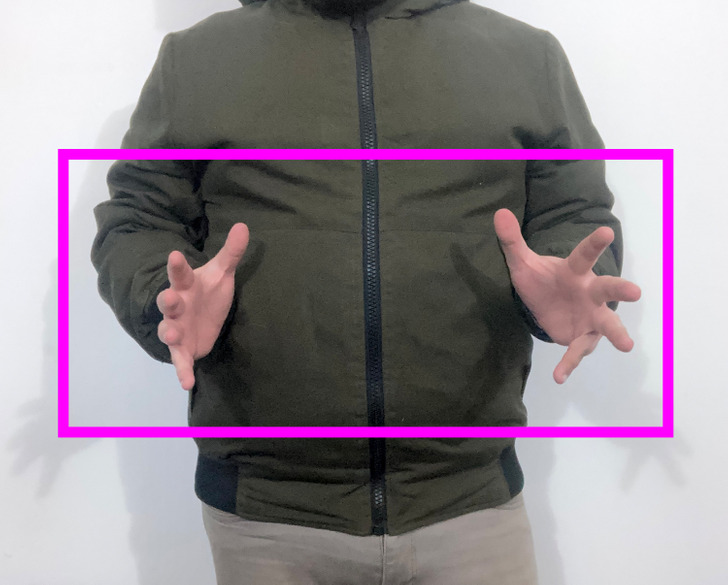
Borrowing its meaning from baseball, your strike zone refers to the area where you would gesture when you have your arms relaxed at your sides, your elbows slightly bent, and your hands hovering at waist level. Your gestures will look more natural in this position, as well as making you look confident and calm.
If you need to, you can make wider and bigger gestures that go outside your strike zone, but you should keep it at a minimum to not be distracting.
7. Make gestures efficiently
Using your hands while speaking may be a useful tool, but one final thing to keep in mind is not to do it too much; repetitive patterns must be avoided as they can get boring for other people. To avoid this, make simple and easy to follow gestures at well-timed moments to better illustrate your point. If you keep your hand movements strong and deliberate, you will seem more confident.
